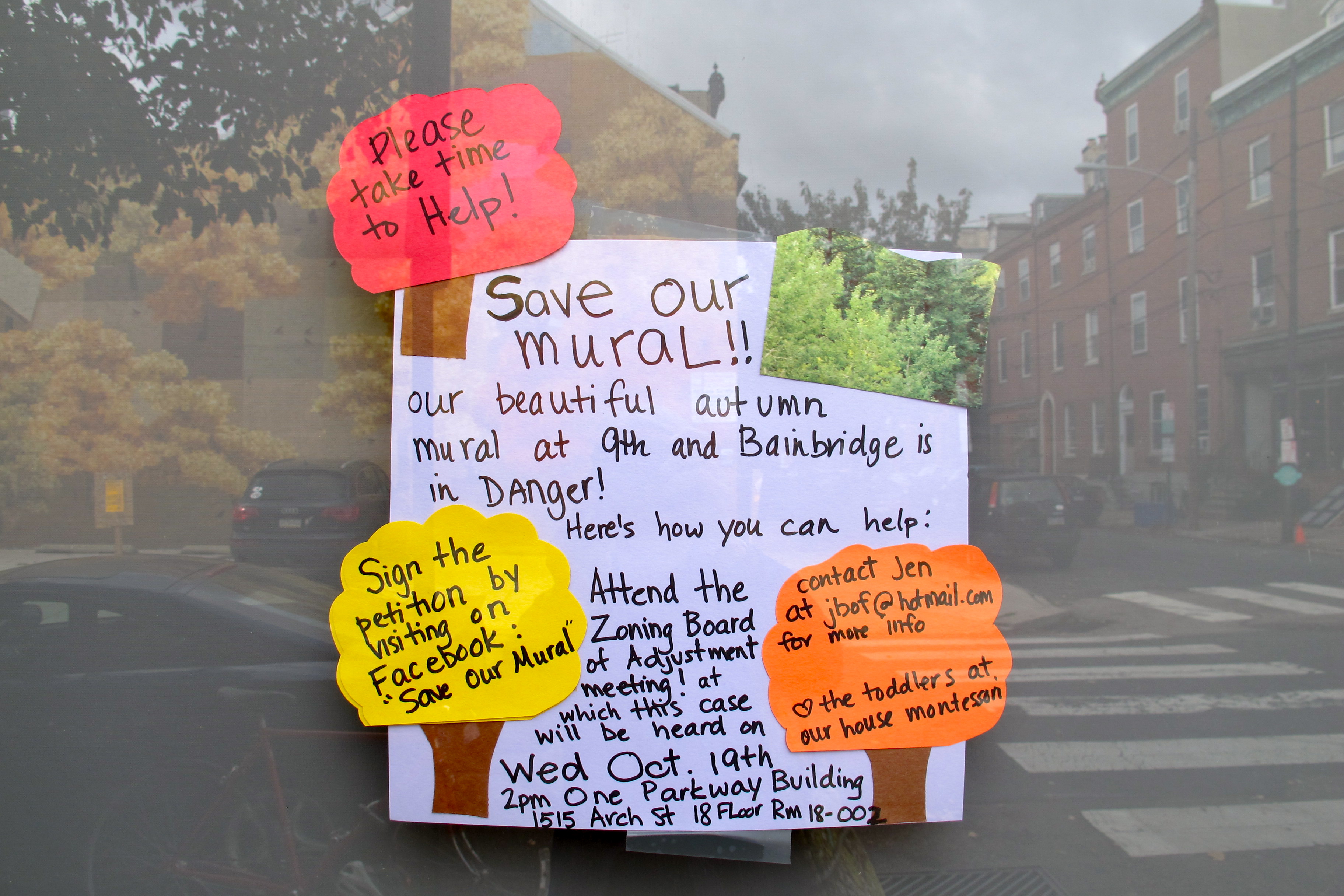Autumn mural debate continues, its fate uncertain

Since Eyes on the Street last talked about the possibility that Bella Vista’s Autumn mural could be lost due to a planned development, a lot has happened.
Neighbors collected more than 1,000 signatures of support for the mural via an online petition, and raised commitments of $250,000 to purchase the lot. But for the developer to consider it, City Paper’s The Naked City blog reported that the price would need to increase to the neighborhood of $600,000. Subsequently, NewsWorks noted that conversations between the developer and neighbors broke down.
Yesterday the Zoning Board of Adjustment heard testimony from David Orphanides, the zoning attorney representing the developers, about the requested parking variance. (Recall that parking is the reason the proposed development came the Bella Vista Town Watch zoning meeting last week, not the mural.) A couple dozen concerned neighbors turned out to the ZBA hearing, but because murals are beyond the purview of zoning regulation only one neighbor was permitted to voice the shared concern about Autumn.
David Guinn, the mural’s artist, also spoke at ZBA hearing. Guinn told me he’s consulting with a lawyer as to whether he has grounds to file a lawsuit under the Visual Artists Rights Act, a federal law that permits the artist to take actions to protect the integrity of his/her artwork irrespective of ownership. It’s not immediately clear if the law applies to the case of a mural, but if it does things could get interesting. The ZBA put off its ruling until early November. Stay tuned.
In a larger sense, the case of Autumn raises questions about all of the multifaceted things murals are intended to do in our neighborhoods. The Mural Arts Program’s Communications Director, Jennifer McCreary, explained via email, “Murals do many things: they serve as agents of change, bring communities together, benefit local business, spur economic development, and serve as creative placemakers. Autumn is a prime example of a mural that does all of these things. There are reasons why cities all over the country have public art programs: it’s because of what art means to the life of a city. It’s invigorating, engaging, inspiring. It’s also about connection– both connecting the community to art, and the community members to each other – something people really need in today’s world.” By those standards, Autumn succeeded. Regardless of its ultimate fate.
WHYY is your source for fact-based, in-depth journalism and information. As a nonprofit organization, we rely on financial support from readers like you. Please give today.





